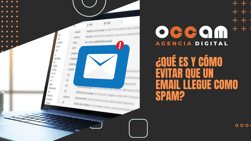Index Content
Permission Marketing is a marketing strategy that consists of requesting the customer's permission to send them information, instead of sending it in the form of SPAM without their consent.
Seth Godin came to this conclusion after observing how it was becoming increasingly difficult to get the customer to respond to advertising stimuli. Just as today we speak of infoxication as an excess of information, a similar phenomenon occurred with advertising at the end of the 20th century. The customer was saturated with so much advertising, as marketing had developed effective strategies and exploited them to the maximum, without being aware that the abuse of advertising could make customers immune to its stimuli.
That is what happened and what remains to this day. The reason why, despite this, marketing is still going strong is that marketing sought new ways of approaching the customer while trying to avoid appearing invasive.
Permission Marketing
The best way to do this, to avoid being invasive, turned out to be to ask for permission. The customer was not at all used to being asked for permission to receive advertising. Automatically, the feeling generated by that brand was positive. But it is also more difficult to refuse advertising when someone asks for permission than when the action is carried out autonomously and without asking.
On the other hand, Permission Marketing brings positive results in that a customer will only agree to receive advertising for those products or services for which he or she is interested. Therefore, for those campaigns that use this marketing technique, customers are sought who have already started the buyer's journey and who are aware of the need they have, including how to satisfy it. This being so, the attention they pay to the advertisement is higher than it would have been if they had received the stimulus in another way and this is where the higher benefit is obtained.
From this concept we can observe some variations of the strategy that have led to other techniques, as is the case of:
- Email marketing: sending advertising through email as the main channel. Email is full of SPAM, in fact, it has a specific folder to accumulate it. Customers who receive unwanted advertising, in addition to feeling a sense of rejection, will send it to this folder without reading it. That is why requesting their permission to send it is more effective. In addition, internally, the company does not have any metrics to count how many of the emails sent en masse are read.
- Newsletter: A more specific example of email marketing, without being considered as such, these are periodic mailings sent by a brand via email, which can include anything from new articles to internal company information such as a new appointment.
- Cookies: Cookies have become a way of asking permission, not only to send advertising, but also to store customer information and data that can later be used for advertising purposes.
Connection to CRM
CRM is an acronym for Customer Relationship Management, a tool used to manage a company's relationship with its customers .
Specifically, it issoftware with services dedicated to helping companies manage their relationships with customers effectively, through all types of channels, direct and indirect. However, it is not just the software itself, but also the entire strategy that is built around it. Through this business strategy, which encompasses sales, marketing and customer service departments, the company seeks to optimise the long-term relationship with its customers .
The CRM stores information aboutcustomers, their personal data (name, address, telephone number), their objectives, and their relationship with the company (visits to the site, established contacts such as calls or emails). The information collected is managed and classified to create an optimal customer communication strategy. The tool is continuously updated, adding any new information about customers and detecting trends in their actions that can help the sales process. It uses both customers and prospects, leads and promoters.
With this information, the CRM is able to detect sales opportunities, weaknesses and strengths, and measure the results obtained by the different sales processes and strategies. The databases and platforms on which the CMR is based are accessible to all staff, so that the whole team can work with updated and automated information .
There are almost as many types of CRM as there are companies and choosing the most suitable one for your company is a fundamental and very personal task. You should choose the one that best suits your company's needs, organisation and applications. However, there are three main types of CRM: operational, analytical and collaborative .
The CRM is, therefore, an excellent tool to combine with the permission marketing strategy, as it allows the company to have the profiles of its customers, promoters and potential customers counted, collected and ordered in order to send them the most appropriate publicity for each one of them.




